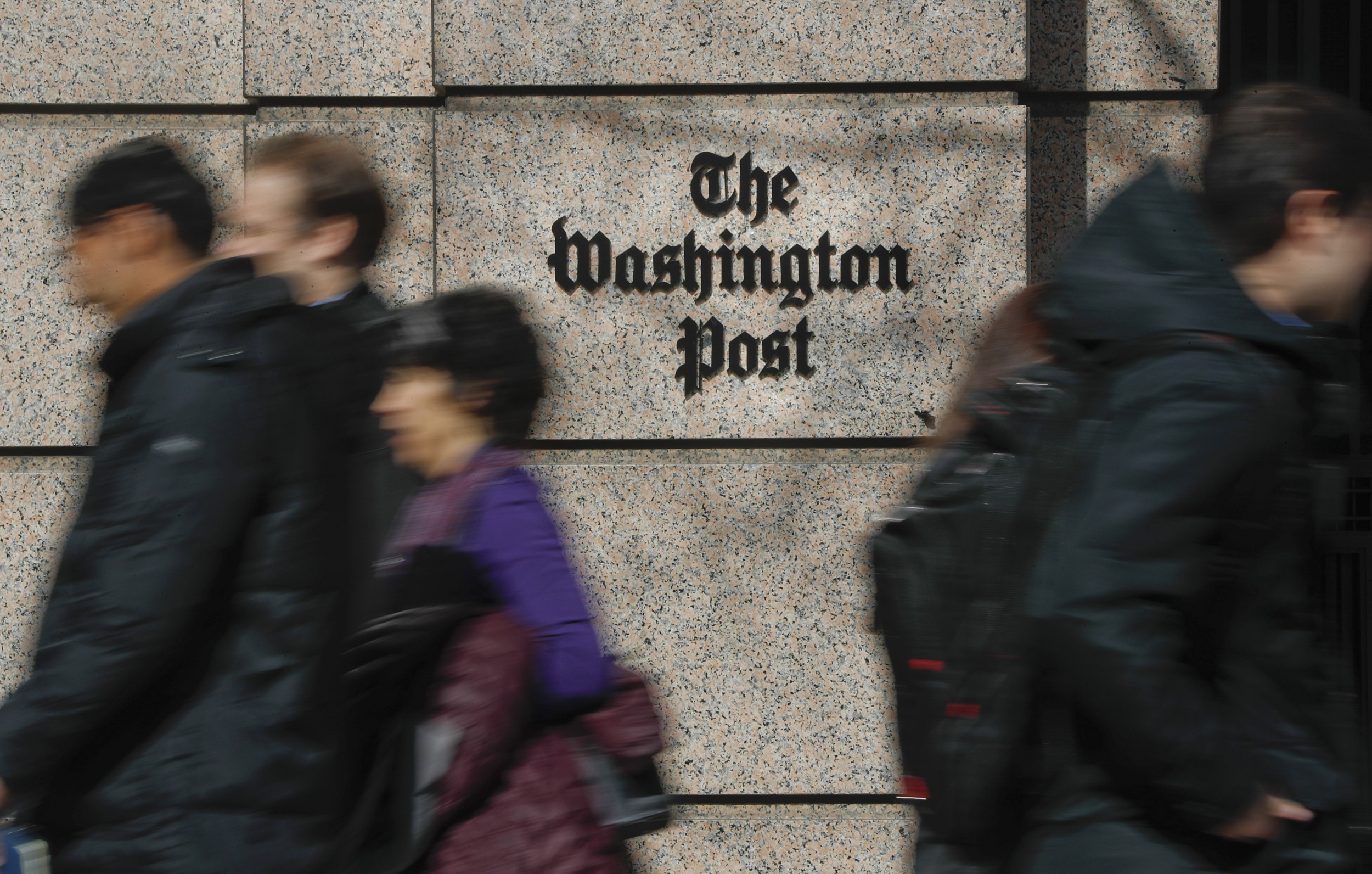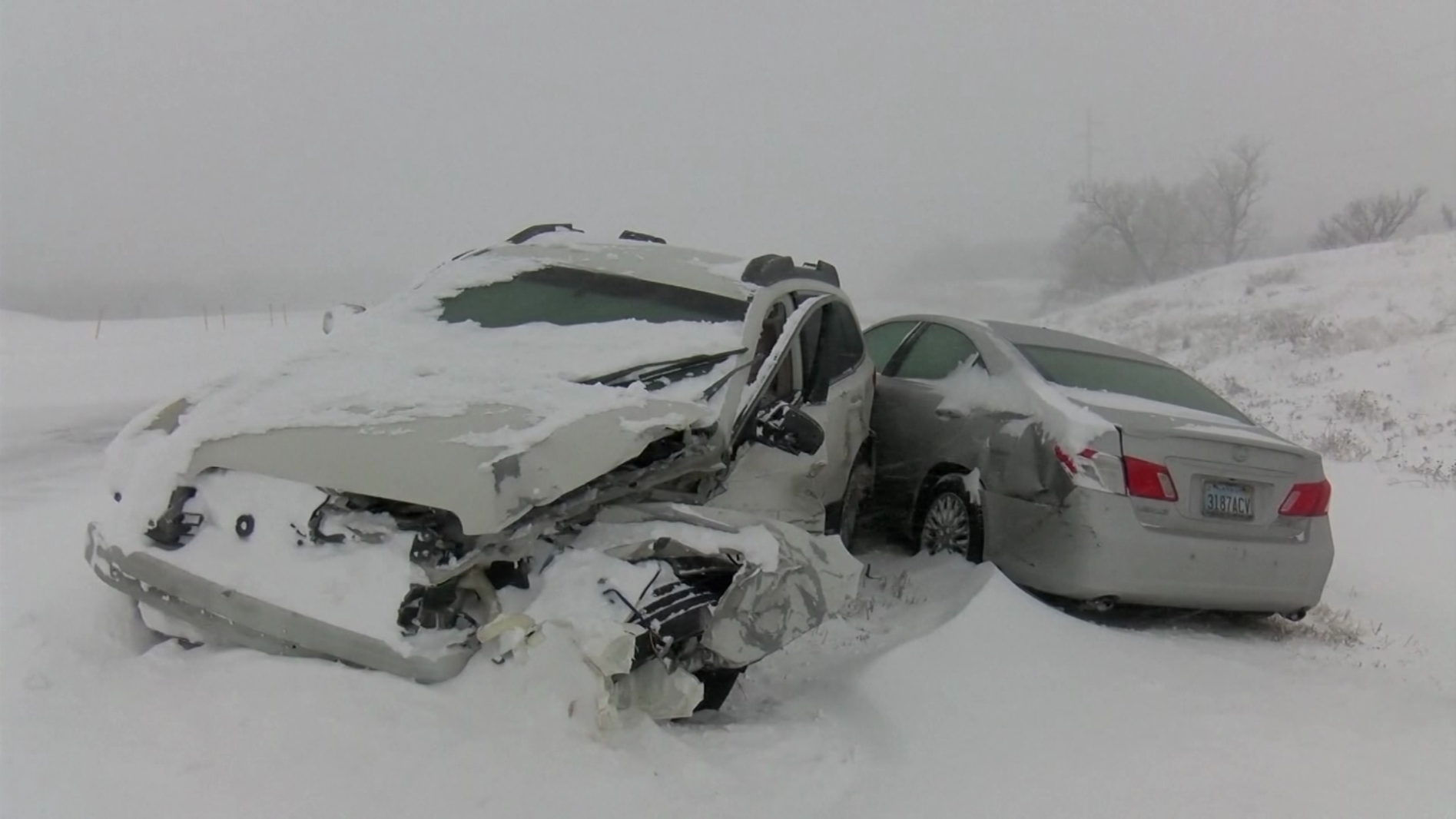Washington
2 years in, Washington's alert system for missing Indigenous people is working

Washington state was first in the nation to implement alerts specific to Missing Indigenous Persons more than two years ago. By the end of August this year, the State Patrol had issued 114 of those alerts, with the subject being located in all but 13 cases.
Law enforcement officials say these alerts play a crucial role in locating teenage runaways and have proven valuable in longer-term cases as well.
You’ve probably seen Missing Indigenous Persons Alerts in your email or online. They’re issued by the Washington State Patrol, at the request of local law enforcement, and they often feature the person’s photo, their age and some details about their disappearance.
Earl Cowan is the chief of police for the Swinomish Tribal Community, northwest of Seattle.
“As a chief of police for a native sovereign nation, it’s a great tool for us to put information out about somebody missing from our community to a very, very wide base very quickly,” he said.
RELATED: FCC adopts an alert system for missing Indigenous people
Cowan said statewide alerts are key. His agency requested one that located a 2-month-old infant being transported far south of the reservation by a non-tribal family member.
The alerts are meant to correct historic disparities. According to the Washington State Patrol, Native Americans are nearly 2% of the state’s population but nearly 6% of its missing persons’ cases.
The disparities and lack of data on many cases were highlighted in a groundbreaking 2018 report by Seattle’s Urban Indian Health Institute which led to calls for more action, including the Attorney General’s Missing and Murdered Indigenous Women and People Task Force and the recent establishment of a cold case unit.
As part of these efforts, the Washington Legislature mandated the new alert system in March 2022.
Mike Williams is Chief of Police for the Suquamish Tribe, on the Kitsap Peninsula. He calls the alerts a huge step forward. He said the majority of alerts he has requested are for juvenile runaways, as with one recent case where the young person was spotted quickly on public transportation.
“We got a wave — I mean 10 or 15 — tips within a half an hour on a runaway we had, that was on a train in downtown Seattle,” Williams said.
Many of these young people run away more than once. Williams said he takes the alert process seriously each time.
At the Washington State Patrol, Carri Gordon oversees all the state’s missing person alerts. She said juvenile runaways make up the majority of the alerts, partly because federal law imposes strict requirements on police to enter missing persons in the National Crime Information Center within two hours of notification if the person missing is age 20 or younger.
Gordon sees the alerts as effective at getting runaway youth to make contact.
“I raised teenage boys and no teenager wants their poster plastered all over Twitter that they’re missing,” she said. “And when they see that, they’re like, ‘Oh crap, they really want to find me.’ And they turn themselves in.”
RELATED: Washington’s first missing Indigenous person alert is issued
Rosemarie Tom is the Legal Advocate and point of contact for families of missing persons at the Lummi Nation Victims of Crime office near Bellingham. Lummit Nation tribal police initiated the state’s first Missing Indigenous Persons Alert after the system was created.
Tom said coordination between tribal and non-tribal law enforcement on missing persons has dramatically improved: People are being located in weeks rather than months.
“It is extremely rapid, we have everyone on board, there’s very clear communication and documentation that I have not seen in the past,” Tom said. “So it’s been really transformative and wonderful support.”
She said that urgency is vital because human traffickers pose a huge risk to these teenagers.
Traffickers “can transfer them overnight over 100 miles or even across state borders with the promise of a better life or a nice relationship or, ‘It’s us against the world,’ and they usually start with romantic relationships,” she said.
With the improvement in jurisdictional issues and communication, Tom said tribal officials are turning their attention to addressing the situations that can prompt young people to run away, including domestic violence, mental health and substance use issues and other root causes.
“The alert and the response itself is very positive,” she said. “The aftermath and the recovery is a very different story. These aren’t happily-ever-after situations most of the time.”
The State Patrol’s Carri Gordon said one surprise has been that Missing Indigenous Persons Alerts have brought breakthroughs in some longer-term cases as well.
Thirty-five-year-old Besse Handy had been missing for more than a year when her mother asked state patrol to send out the alert.
“At the time we were like, ‘Oh, I don’t know, that wasn’t really the intent of the program,’” Gordon said. “But the more we thought about it, we did it, and because of that a lot of things about the case itself came to light.”
Like the fact that Handy’s file lacked DNA and dental records to help identify her. Meanwhile, Handy’s mother Connie Samuels had been desperately searching for her daughter, even dreaming that Besse was back home.
“Because there’s always that little thing of hope in your mind that goes, maybe I’m going to see her again. Maybe I’ll find her. Maybe she’s alive,” Samuels said. “That never stops.”
RELATED: Colorado’s new alert system is helping to locate missing Indigenous people
Until you know for sure, she said. Thanks to the dental records, Samuels learned in January 2023 that Besse had died in a Seattle fire a year and a half earlier.
Now Samuels is raising the two children her daughter left behind. She says she hopes the Missing Indigenous Person Alerts can prevent those losses for the next family.
Dawn Pullin is one of the tribal liaisons at the Washington State Patrol who helps families navigate these searches. She said the alerts can take some of the burden off family members who in the past labored alone to get the word out, especially about missing adults.
“The success rate is amazing,” Pullin said. “What it does is it provides a professionalism to people searching for their loved ones, versus creating their own fliers or their own personal contact information on the internet.”

Washington
Confirmed: Cardinal McElroy to be appointed Washington archbishop

Cardinal Robert McElroy of San Diego will be announced as the new archbishop of Washington, D.C., The Pillar has confirmed.
After reporting January 4 that multiple U.S. bishops had said that the appointment was imminent, The Pillar has separately confirmed that Pope Francis has selected McElroy to succeed Cardinal Wilton Gregory in the capital see.
The announcement is expected Monday, according to sources close to the process.
McElroy’s appointment follows a lengthy and contentious process to find a successor for the Washington archdiocese, which involved a protracted standoff between some American cardinals and the apostolic nunciature.
The Pillar has previously reported that following a meeting in October in which McElroy joined Cardinals Blase Cupich of Chicago and Joseph Tobin of Newark to meet with Pope Francis during the synod on synodality in October, Francis was said to have decided against appointing McElroy.
Instead, Francis tasked former Washington archbishop Cardinal Donald Wuerl to identify a suitable candidate.
Wuerl, sources close to the process have confirmed to The Pillar, suggested Bishop Sean McKnight of Jefferson City, with Cardinal Gregory also signing off on the recommendation. However, in the weeks following the presidential election result, which saw Donald Trump reelected to the White House, Francis agreed to revisit McElroy’s candidacy.
As Bishop of San Diego and as a cardinal, McElroy has been outspoken on various subjects touching the political area, most especially immigration.
In addition to the political sensitivities of the role, McElroy will also assume leadership of more than half a million Catholics in the DC area and southern Maryland, becoming their third archbishop since 2018.
McElroy turns 71 in February and succeeds Cardinal Gregory, 77, who was appointed to succeed Cardinal Donald Wuerl in 2019, whose resignation was accepted by Pope Francis following the scandal surrounding Wuerl’s own predecessor, Theodore McCarrick, the previous year.
Despite promises of transparency by Gregory at the time of his appointment, the archdiocese has so far declined to answer repeated questions about McCarrick’s tenure, especially money raised and spent via his personal “archbishop’s fund” during his time in Washington.
McElroy has himself faced questions about McCarrick in the past, with some expressing concerns about how he responded to a 2016 warning about the now-laicized former cardinal.
In addition to lingering questions about McCarrick, McElroy will also have to reckon with a process of financial restructuring in the Washington archdiocese.
In December last year, several local priests told The Pillar that chancery officials had painted a bleak picture of archdiocesan finances, announcing sweeping reforms of its parish assessment system to bridge a multi-million dollar deficit.
As Bishop of San Diego, McElroy has at times raised eyebrows on the national stage, calling for the synod on synodality to debate issues like the sacramental ordination of women, despite Pope Francis repeatedly saying such issues were not up for discussion.
The cardinal has previously made calls for “comprehensive inclusion” in Eucharistic reception.
Following the Dicastery for the Doctrine of the Faith’s 2023 instruction Fiducia supplicans on the blessing of persons on same-sex relationships, which Rome agreed to allow the bishops of Africa to not implement in their own dioceses, McElroy hailed the “diverging pastoral paths” taken by the Church in different countries as a model of healthy decentralization, rather than a sign of contradiction within the Church.
Last year, McElroy issued a controversial homeschooling policy in the San Diego diocese, barring local Catholic home schooling groups from using parish facilities.

Cardinal McElroy was ordained a priest for the Archdiocese of San Francisco in 1980, serving as secretary to Archbishop John Quinn. After several years in parish ministry, Quinn named him vicar general of the archdiocese in 1995.
McElroy was named auxiliary bishop of the Archdiocese of San Francisco in 2010, and made Bishop of San Diego in 2015. Pope Francis created him a cardinal in 2022.
Washington
Buccaneers Claim 3 Seed in NFC Playoff Field, Face Commanders in Wild Card Round

The Tampa Bay Buccaneers not only captured a fourth straight NFC South title on Sunday, but they also improved their overall position in the playoff standings and kept alive the possibility of two home games in the postseason.
While the Buccaneers secured their own playoff spot with a Week 18 win over the New Orleans Saints, the Los Angeles Rams had already clinched the NFC West title the Week before. That put the Rams into the third overall seed in the NFC playoff field coming into the final weekend, but a loss to the Seattle Seahawks on Sunday allowed Tampa Bay to leap them for that spot. Both the Buccaneers and Rams finished with 10-7 records but Tampa Bay won the tiebreaker for positioning based on a better record against conference opponents (8-4 to 6-6).
As the #3 seed, the Buccaneers will host a playoff game in the Wild Card round against the team that claimed the #6 seed. That proved to be Washington after the Commanders beat the Cowboys on Sunday to improve to 11-6. The NFL will announce the date and time of the game later on Sunday evening.
The Buccaneers will be taking part in the playoffs for a fifth straight season, the longest such run in franchise history, but this is the first time in that span that they will start out as the #3 seed. They earned the top Wild Card spot in 2020 and, coincidentally, started their playoffs at Washington after the Commanders won the NFC East with a 7-9 record. The Bucs won the NFC South each year from 2021 to 2023 and in those seasons was seeded second, fourth and fourth.
Tampa Bay could still be at home for two playoff games. If they win next weekend and the second-seeded Philadelphia Eagles lose to Green Bay, the Buccaneers would go into the Divisional Round as the second-highest remaining seed behind the winner of the Detroit-Minnesota game on Sunday night. That team would enjoy a bye in the first round and then play at home against the lowest of the remaining seeds. The Buccaneers would get the next seeded team up from the bottom, which would be either Minnesota/Detroit or Los Angeles.
Washington
Washington Post cartoonist quits over rejected Trump sketch

What’s New
Pulitzer Prize-winning cartoonist Ann Telnaes resigned from The Washington Post after the editorial team rejected one of her cartoons criticizing The Post‘s billionaire owner Jeff Bezos.
Writing on her Substack blog on Friday, Telnaes said it was the first time her work was censored due to its point of view, prompting her decision to leave
Newsweek has contacted The Washington Post via email for comment.
Pablo Martinez Monsivais/ASSOCIATED PRESS
Why It Matters
Telnaes’ resignation highlights concerns over press freedom and the influence of billionaire owners on editorial decisions in major news outlets, including at the LA Times and The Washington Post.
Critics argue that billionaire owners could censor critical commentary, undermining journalism’s role in holding power accountable.
What To Know
The cartoon in question depicted Meta CEO Mark Zuckerberg, OpenAI CEO Sam Altman, LA Times owner Patrick Soon-Shiong, and The Washington Post owner Jeff Bezos, all billionaires, and Micky Mouse, representing Disney, kneeling before a statue of Donald Trump, offering sacks of cash.
Telnaes posted a rough of the cartoon in the blog post:

Telnaes described the decision to reject the cartoon as a “game changer” for her relationship with the paper.
But Post Opinions editor David Shipley, in a statement to Politico, said the cartoon was rejected to avoid repetition, because a column and a satirical piece on the same subject had already been published.
In her blog post, Telnaes outlined her career as an advocate for press freedom in various roles, having served on advisory boards for organizations supporting editorial cartoonists.
She emphasized the importance of holding power accountable and warned against efforts to “curry favor with an autocrat-in-waiting.”
What People Are Saying
Elizabeth Warren, Senator, on X: “@AnnTelnaes resigned after The Washington Post editorial page killed her cartoon. It’s worth a share. Big Tech executives are bending the knee to Donald Trump and it’s no surprise why: Billionaires like Jeff Bezos like paying a lower tax rate than a public school teacher.”
David Shipley, Washington Post Opinions Editor, in a statement to Politico: “My decision was guided by the fact that we had just published a column on the same topic as the cartoon and had already scheduled another column — this one a satire — for publication. The only bias was against repetition.”
Ann Telnaes, Cartoonist, on Substack: “For the first time, my editor prevented me from doing that critical job. So I have decided to leave the Post.”
What Happens Next
With Donald Trump set to assume the presidency, The Post faces increased scrutiny over its ability to maintain editorial independence under Bezos’s ownership. Telnaes’ departure raises questions about how the paper will approach coverage of Trump’s administration, particularly regarding its willingness to challenge powerful figures.
-

 Health1 week ago
Health1 week agoNew Year life lessons from country star: 'Never forget where you came from'
-
/cdn.vox-cdn.com/uploads/chorus_asset/file/24982514/Quest_3_dock.jpg)
/cdn.vox-cdn.com/uploads/chorus_asset/file/24982514/Quest_3_dock.jpg) Technology1 week ago
Technology1 week agoMeta’s ‘software update issue’ has been breaking Quest headsets for weeks
-

 Business5 days ago
Business5 days agoThese are the top 7 issues facing the struggling restaurant industry in 2025
-

 Culture5 days ago
Culture5 days agoThe 25 worst losses in college football history, including Baylor’s 2024 entry at Colorado
-

 Sports5 days ago
Sports5 days agoThe top out-of-contract players available as free transfers: Kimmich, De Bruyne, Van Dijk…
-

 Politics3 days ago
Politics3 days agoNew Orleans attacker had 'remote detonator' for explosives in French Quarter, Biden says
-

 Politics3 days ago
Politics3 days agoCarter's judicial picks reshaped the federal bench across the country
-

 Politics1 day ago
Politics1 day agoWho Are the Recipients of the Presidential Medal of Freedom?













